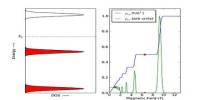In a modest, multi-institutional trial, an AI-based system helped healthcare professionals determine if bladder cancer patients had fully responded to chemotherapy before undergoing radical cystectomy (bladder removal surgery).
However, the researchers stress that their tool shouldn’t be used in lieu of human expertise and that AI isn’t a replacement for it.
“If you use the tool smartly, it can help you,” said Lubomir Hadjiyski, Ph.D., a professor of radiology at the University of Michigan Medical School and the senior author of the study.
In an effort to prevent the cancer from returning or spreading to other organs or regions, surgeons frequently remove the entire bladder when patients are diagnosed with bladder cancer. However, mounting data suggests that surgery might not be required if a patient receives chemotherapy and shows no signs of illness.
It might be challenging to tell whether a lesion that persists after therapy is just damaged or necrotic tissue as a result of the treatment or if cancer still exists. The researchers wondered if AI could help.
“The big question was when you have such an artificial device next to you, how is it going to affect the physician?” Hadjiyski said. “Is it going to help? Is it going to confuse them? Is it going to raise their performance or will they simply ignore it?”
One interesting thing that we figured out is that the computer makes mistakes on a different subset of cases than a radiologist would. Which means that if the tool is used correctly, it gives a chance to improve but not replace the physician’s judgment.
Lubomir Hadjiyski
Pre and post-treatment scans of 157 bladder tumors were examined by 14 doctors from various disciplines, including radiology, urology, and oncology, as well as two fellows and a medical student. The providers gave ratings for three measures that assessed the level of response to chemotherapy as well as a recommendation for the next treatment to be done for each patient (radiation or surgery).
Then the providers looked at a score calculated by the computer. Higher scores were associated with a higher chance of a complete response to chemotherapy, and vice versa for lower scores. The providers have the option to change their ratings or leave them alone. To determine accuracy, their final evaluations were contrasted with tumor samples obtained following their bladder removal procedures.
The AI technology helped providers across all specializations and levels of experience improve their assessments. The increases for those with less experience were significantly greater, allowing them to diagnose at the same level as the more experienced participants.
“That was the distinct part of that study that showed interesting observations about the audience,” Hadjiyski said.
More academic healthcare professionals benefited from the instrument than those employed by hospitals with a narrow focus on clinical care.
The study is part of an NIH-funded project, led by Hadjiyski and Ajjai Alva, M.D., an associate professor of internal medicine at U-M, to develop and evaluate biomarker-based tools for treatment response decision support of bladder cancer.
“Over the course of more than two decades of conducting AI-based studies to assess different types of cancer and their treatment response,” Hadjiyski says he’s observed that machine learning tools can be useful as a second opinion to assist physicians in decision making, but they can also make mistakes.
“One interesting thing that we figured out is that the computer makes mistakes on a different subset of cases than a radiologist would,” he added. “Which means that if the tool is used correctly, it gives a chance to improve but not replace the physician’s judgment.”
















